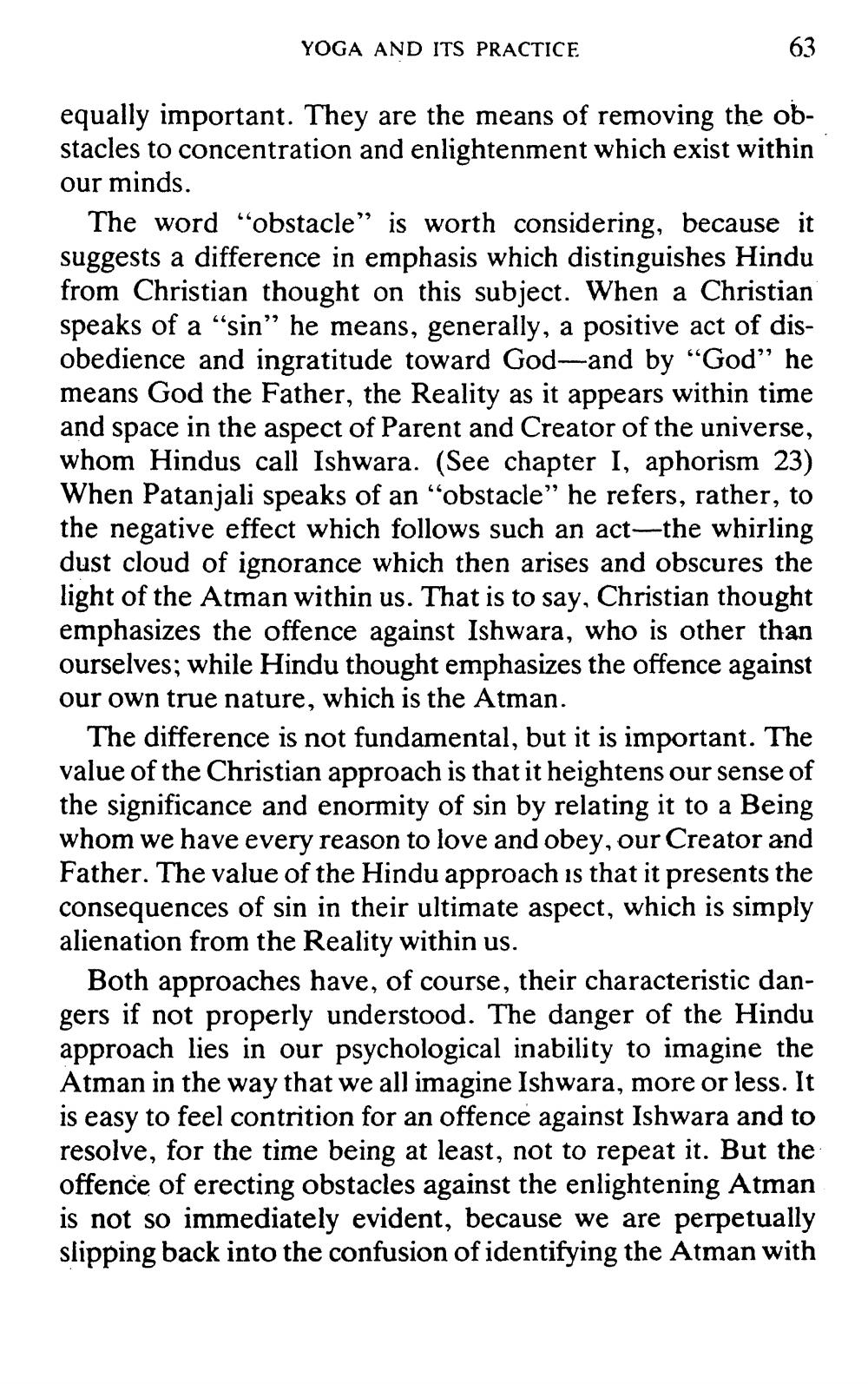________________
YOGA AND ITS PRACTICE
equally important. They are the means of removing the obstacles to concentration and enlightenment which exist within our minds.
The word “obstacle” is worth considering, because it suggests a difference in emphasis which distinguishes Hindu from Christian thought on this subject. When a Christian speaks of a “sin” he means, generally, a positive act of disobedience and ingratitude toward God-and by “God” he means God the Father, the Reality as it appears within time and space in the aspect of Parent and Creator of the universe, whom Hindus call Ishwara. (See chapter I, aphorism 23) When Patanjali speaks of an “obstacle" he refers, rather, to the negative effect which follows such an act—the whirling dust cloud of ignorance which then arises and obscures the light of the Atman within us. That is to say, Christian thought emphasizes the offence against Ishwara, who is other than ourselves; while Hindu thought emphasizes the offence against our own true nature, which is the Atman.
The difference is not fundamental, but it is important. The value of the Christian approach is that it heightens our sense of the significance and enormity of sin by relating it to a Being whom we have every reason to love and obey, our Creator and Father. The value of the Hindu approach is that it presents the consequences of sin in their ultimate aspect, which is simply alienation from the Reality within us.
Both approaches have, of course, their characteristic dangers if not properly understood. The danger of the Hindu approach lies in our psychological inability to imagine the Atman in the way that we all imagine Ishwara, more or less. It is easy to feel contrition for an offence against Ishwara and to resolve, for the time being at least, not to repeat it. But the offence of erecting obstacles against the enlightening Atman is not so immediately evident, because we are perpetually slipping back into the confusion of identifying the Atman with




